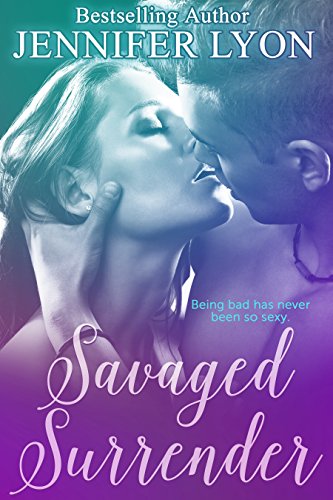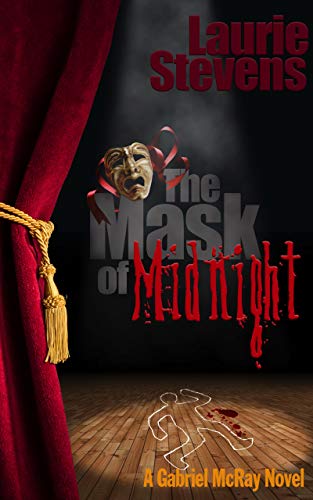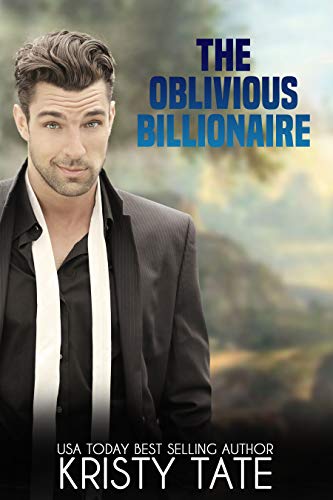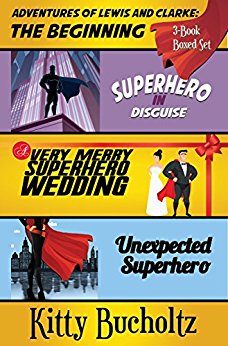When SEO Works The Way It Should
December 12, 2024 by Denise M. Colby in category The Writing Journey by Denise Colby tagged as Denise M. Colby, Marketing for Authors, SEOI wanted to share a fun full circle moment. It has to do with the SEO I created in a 2019 blog post on my own website. And a current search in 2024. The SEO worked the way it should. Which is why I titled this blog post When SEO Works The Way It Should.

Here’s what happened.
My youngest son had been helping me search for Christmas stockings on his own computer. We want to find one to match our current style. What we have are all Disney themed and have a character head at the top.
My husband and I first got our Christmas stockings the year we were married, which was 1995. A few years later, after our first son was born, we were able to add to the original set. We decided to purchase all that we could find for future children. We have six stockings in the set, with one being used for the dog.
In 2019, I had written a blog post about my favorite decorations at Christmas time. I mention the history behind our stockings and included a picture of our stockings. I added alt text for the photo and named it before uploading it. Other decorations are mentioned in the blog post, but it’s the stockings that are relevant to today’s post.
Flash forward back to 2024. When my son and I were googling Mickey Christmas stockings 1995, my blog post from 2019 popped up. It was a full circle moment. And it shows that if you spend the time setting up your SEO well, people will find your blog posts. This means it’s important to use phrases for your alt text on your images people would search by.
Why is Denise talking about SEO?
Denise loves to share learnings about blog and website SEO. She teaches classes on SEO and author branding as well. One of her blog posts is titled Why SEO Should Matter to An Author. Sign up for her Marketing for Authors newsletter on her website.
Denise loves to share about her writing journey (see all her posts here), including her word of the year (this year it is GROW), her debut novel When Plans Go Awry, and all the things in between. You can visit her at her website and blog at www.denisemcolby.com or on her facebook or instagram. Please note: some links include Amazon Associate links where Denise can earn from qualifying purchases.
0 0 Read moreUsing a Blog SEO Checklist to Streamline Your Blog Post
May 12, 2021 by Denise M. Colby in category The Writing Journey by Denise Colby tagged as Blog SEO Checklist, Denise M. Colby, Marketing for Authors, SEO, SEO MarketingDid you know that using an Blog SEO Checklist can help you streamline the time it takes you to build your blog posts?
We all know it takes time to figure out what we even want to write about, but then we also need to figure out all the SEO parts that support that particular blog post.
If we were to build the SEO as part of the blog post step, we’d save ourselves a lot of time and be more strategic and purposeful with what we are posting.
I don’t know about you, but it seems every month I forget how much time it takes to organize my SEO because I think about it AFTER I write the post. Sometimes it takes longer figuring out the SEO then it does to write the post and pull graphics together. And then because I’m entering it all last minute, I don’t think it through as much as I would like.

I’m working on changing that and thought it would be helpful to pull together a checklist for all of us.
Focus Keyword:
Figuring out this first—even before you start writing the post—will help save you time in the long run. What do you want your focus word to be? Everything else should stem from this.
Category & Tags:
Knowing your categories and tags before you develop your blog posts help you be more strategic and set up an organization within your posts. In my classes I help you brainstorm and build out potential ideas for your blog.
Blog Title:
Make sure to put your focus keyword in your title and the first paragraph of your post.
Slug:
The slug should be condensed version of your title and/or keyword. See my blog post about slugs—URL Slugs: The Right Custom Slug Builds SEO or Custom URL Slug and How To Make One
Meta Description:
This is a summary in a small one-to-two sentence structure. Some use the first paragraph, some change it up. Make sure it includes your focus keyword, and remember this is the summary someone sees if they are searching the topic and your post appears on the search results.
Graphics Alt Text:
The Alt Text should have your keyword in it. If you pick your keyword last and already uploaded your graphics (see my three-part blog post about graphics and SEO) you might miss this opportunity to connect your graphics with stronger SEO.
Outbound Link:
Think of one link that would support your blog post (research, your own website). You can sign up for my Marketing for Authors Newsletter using this link to my website.
Inbound Link:
Think of one link within the blog website that supports your current blog post. Don’t forget to use Anchor Text. I did this in the slug section and the graphics alt text above.
How to Apply Your Blog SEO Checklist
I highly recommend creating a spreadsheet to keep track of what you use for SEO every post. It’s important that you don’t repeat the same words and phrases each time, yet build out synonyms and similar themes with your SEO to help establish your authority on certain topics.
If you have a notebook, you can download this sheet to write in the blanks.

Short on time? Take a screen shot of the data, or write it on a post-it note. Anything to help you keep track of your SEO. It’s all about building your brand, and your SEO strategy is a part of that. And using a blog SEO checklist is one way to help you develop this strategy.
0 0 Read moreURL Slugs: The Right Custom Slug Builds SEO
February 12, 2021 by Denise M. Colby in category The Writing Journey by Denise Colby tagged as Denise M. Colby, Marketing for Authors, SEO, SEO MarketingDid you know you can customize the slug part of the URL for every blog post you create AND that it helps to build SEO? All of us create a URL when we post on this blog. But did you know you can customize it?

What is the slug and what does it do.
A URL is the address of a website page. URL stands for Uniform Resource Locator. It’s this address that allows someone to go directly to a specific page. The slug is the tail end of the URL that identifies a particular page on a website in an easy to read form.
What’s nice about the slug is that you can provide the link. Or someone can find it in a search engine.
And we all want someone to find it if they search for the information we are writing about.
How can a URL slug appear in the searches we want?
Choose the right words.
In my research I found out that the simple extra words can be removed. Words such as the, and, of.
The simpler, the better. Just 4-5 words max.
And using the Keyword or phrase you’ve selected is a bonus when building SEO.
Even though we don’t own this blog, we want our writing to be found. So SEO on our individual blog pages matter, which means the right slug builds SEO.
And one way to do that is to customize the URL slug.
How do you customize the URL slug to build SEO?
The slug is listed in the Yoast section at the bottom of our post entry. You can also see it appear in the Permalink to the right, under the document.
Just take out the extra words. Choose words that would be a phrase that someone would write in a search looking for this particular article.
For this blog post, I chose custom-slug-builds-seo, which is the same as my keyword phrase.
I then took this keyword/slug and googled it to make sure that it fit what I wanted it to fit.
Once you set a slug, don’t change it.
This is because once you give out the link to the post, if you change it, no one will be able to find it.
I know I have several slugs I would love to go back and change and make them stronger and shorter. I didn’t know what I didn’t know.
But keep in mind. It may not be wise to go back and clean up past URLs. Especially if you have already used them in other blog posts or pages. Once you change the URL the link is broken and people who click on the old link will get an error message.
If you’d like to learn more about SEO, sign up for my Marketing for Authors newsletter (notice this url slug was created way before I knew to condense them), or take a look at some of my other posts on this website including one about blog post creation.
I’d love to learn your experience with renaming the slug part of URL. Let us all know with your comments listed below.
0 0 Read morePart 3: Increase SEO With Photo Image Caption In Your Posts
August 10, 2018 by Denise M. Colby in category The Writing Journey by Denise Colby, Writing tagged as Denise M Colby, Image Caption, Marketing for Authors, SEO, SEO Marketing, website marketing, writer's tips
This is the third installment on using website images to increase and maximize the SEO potential for website pages and posts. In the first part I discussed ALT text, which is text added to the image file background before being placed in a post. The second installment covered specifics on Image File Names and how naming the file BEFORE it’s uploaded to a website will get better results in SEO ranking. In this post, I will discuss Image Caption, why Image Captions are important and how to use them best.
Image Caption are the words shown underneath photos on a website page or post.
It is a known fact that readers will scan and read the image caption more than the article itself. Thus, image caption helps to highlight what the article is about and draw readers in. When writing captions, it’s important to not just state what the picture is, but to tell readers something they don’t know from just looking at the photo. Captions can be a few short words or several sentences long. The decision is personal preference, but whatever is decided, keep consistent for an overall look and feel.
How to write Image Captions to maximize SEO?
1. Choose a great image.
An image surrounded by text that is related will rank better in a search, so choosing an image pertinent to the post is crucial.
2. Identify what is going on in the picture besides the obvious.
Save the obvious description for the ALT Text. See this post for details on writing strong ALT text.
3. Write descriptions without flowery or unnecessary words.
There’s a small space to communicate the idea so choose words wisely.
4. Provide context to connect the image to the article.
Make sure to share something the reader wouldn’t know just by looking at the photo.
5. Be informative.
If a reader isn’t going to read the entire article, what information should they walk away with? If they find the captions helpful, they may read more or reference the information later.
How does this apply to us as writers?
We want to find readers for our books, right? Ask—how would someone search (type in words in the search bar) to find a book that has a topic like mine?
Example #1
My working manuscript titled A Man Was Not The Plan is set in 1869. My heroine moves west to become a schoolteacher in a small town. One of the main settings is a one-room schoolhouse. Schoolhouses are a niche, so I might choose to write a post about schoolhouses. So for that post I would choose an image with a schoolhouse and add an image caption such as:

This One-room Schoolhouse in Sacramento, CA was used for inspiration in my latest novel A Man Was Not The Plan.
Example #2
If my book is released or I have the cover done, somewhere in the post I would include a picture of my book cover which I hope to include a schoolhouse—even if it’s in the background. The title itself doesn’t say anything about schoolhouses and I don’t need to mention where to purchase because I can provide a link with the image, so I would want the caption to be more descriptive.

This one-room schoolhouse seems to wreak havoc on Olivia’s plans in A Man Was Not the Plan by Denise M. Colby
What are other ideas to use for image captions related to our books?
Animals, clothing, any setting—whether a specific building, ranch or room (a picture of the kitchen table where many discussions in the book take place for example), a map or even a quote from your book. If you did a quote, one idea for an Image Caption would be to state a behind the scenes thought to support that quote, such as:

Olivia Carmichael had no idea how much she would eat her words.

Luke’s heart had other ideas.
Note: You can bold, italicize the words, and alter the phrasing after they are placed in the post. The number of lines for the caption can vary by increasing or decreasing the size of the photo. The one thing I haven’t figure out yet was how to center the text under the photo. Of course once I hit preview it did center the text. So make sure to look at your preview-it will look different than where you input your post.
As you can see, there are several ways to be creative with the words used in the caption. I hope that this post gets those creative juices flowing. You don’t have to always use captions for every photo, but a few strategic ones here and there can help readers find exactly what they are looking for.
0 0 Read more
Affiliate Links
A Slice of Orange is an affiliate with some of the booksellers listed on this website, including Barnes & Nobel, Books A Million, iBooks, Kobo, and Smashwords. This means A Slice of Orange may earn a small advertising fee from sales made through the links used on this website. There are reminders of these affiliate links on the pages for individual books.
Search A Slice of Orange
Find a Column
Archives
Featured Books
INTIMATE RELATIONS
A woman in a window. A cop out of his element. A crime of unimaginable passion.
More info →THE OBLIVIOUS BILLIONAIRE
How can you know where you're going if you can't remember where you've been?
More info →ADVENTURES OF LEWIS AND CLARK BOXED SET
She thought marriage would be sex, laundry, and a mortgage.
Girl, was she wrong.
Newsletter
Contributing Authors
Search A Slice of Orange
Find a Column
Archives
Authors in the Bookstore
- A. E. Decker
- A. J. Scudiere
- A.J. Sidransky
- A.M. Roark
- Abby Collette
- Alanna Lucus
- Albert Marrin
- Alice Duncan
- Alina K. Field
- Alison Green Myers
- Andi Lawrencovna
- Andrew C Raiford
- Angela Pryce
- Aviva Vaughn
- Barbara Ankrum
- Bethlehem Writers Group, LLC
- Carol L. Wright
- Celeste Barclay
- Christina Alexandra
- Christopher D. Ochs
- Claire Davon
- Claire Naden
- Courtnee Turner Hoyle
- Courtney Annicchiarico
- D. Lieber
- Daniel V. Meier Jr.
- Debra Dixon
- Debra H. Goldstein
- Debra Holland
- Dee Ann Palmer
- Denise M. Colby
- Diane Benefiel
- Diane Sismour
- Dianna Sinovic
- DT Krippene
- E.B. Dawson
- Emilie Dallaire
- Emily Brightwell
- Emily PW Murphy
- Fae Rowen
- Faith L. Justice
- Frances Amati
- Geralyn Corcillo
- Glynnis Campbell
- Greg Jolley
- H. O. Charles
- Jaclyn Roché
- Jacqueline Diamond
- Janet Lynn and Will Zeilinger
- Jaya Mehta
- Jeannine Atkins
- Jeff Baird
- Jenna Barwin
- Jenne Kern
- Jennifer D. Bokal
- Jennifer Lyon
- Jerome W. McFadden
- Jill Piscitello
- Jina Bacarr
- Jo A. Hiestand
- Jodi Bogert
- Jolina Petersheim
- Jonathan Maberry
- Joy Allyson
- Judy Duarte
- Justin Murphy
- Justine Davis
- Kat Martin
- Kidd Wadsworth
- Kitty Bucholtz
- Kristy Tate
- Larry Deibert
- Larry Hamilton
- Laura Drake
- Laurie Stevens
- Leslie Knowles
- Li-Ying Lundquist
- Linda Carroll-Bradd
- Linda Lappin
- Linda McLaughlin
- Linda O. Johnston
- Lisa Preston
- Lolo Paige
- Loran Holt
- Lynette M. Burrows
- Lyssa Kay Adams
- Madeline Ash
- Margarita Engle
- Marguerite Quantaine
- Marianne H. Donley
- Mary Castillo
- Maureen Klovers
- Megan Haskell
- Melanie Waterbury
- Melisa Rivero
- Melissa Chambers
- Melodie Winawer
- Meriam Wilhelm
- Mikel J. Wilson
- Mindy Neff
- Monica McCabe
- Nancy Brashear
- Neetu Malik
- Nikki Prince
- Once Upon Anthologies
- Paula Gail Benson
- Penny Reid
- Peter J Barbour
- Priscilla Oliveras
- R. H. Kohno
- Rachel Hailey
- Ralph Hieb
- Ramcy Diek
- Ransom Stephens
- Rebecca Forster
- Renae Wrich
- Roxy Matthews
- Ryder Hunte Clancy
- Sally Paradysz
- Sheila Colón-Bagley
- Simone de Muñoz
- Sophie Barnes
- Susan Kaye Quinn
- Susan Lynn Meyer
- Susan Squires
- T. D. Fox
- Tara C. Allred
- Tara Lain
- Tari Lynn Jewett
- Terri Osburn
- Tracy Reed
- Vera Jane Cook
- Vicki Crum
- Writing Something Romantic
Affiliate Links
A Slice of Orange is an affiliate with some of the booksellers listed on this website, including Barnes & Nobel, Books A Million, iBooks, Kobo, and Smashwords. This means A Slice of Orange may earn a small advertising fee from sales made through the links used on this website. There are reminders of these affiliate links on the pages for individual books.







































